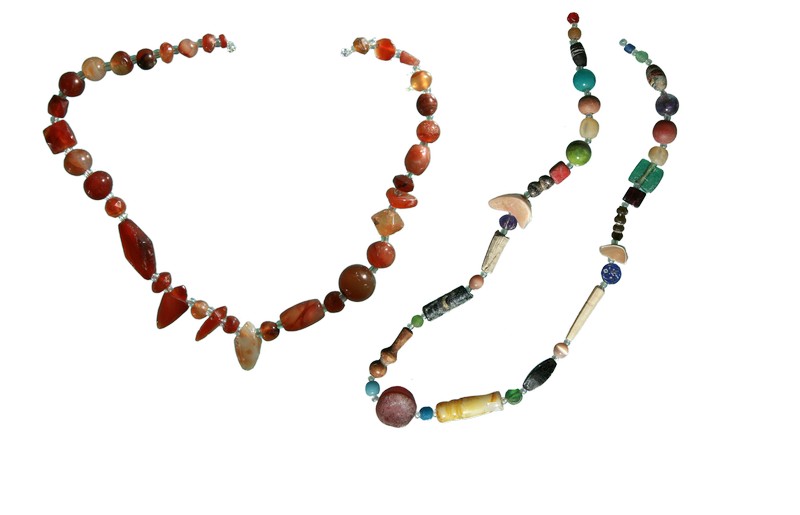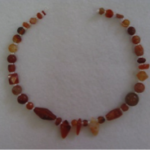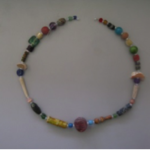Give Me Beads!
Happy Mardi Gras!

Beads found by the TMSP
In honor of Mardi Gras, we thought we would share with you some information about… beads! Beads, the world’s first form of adornment, come in an astonishingly wide range of decorative and polychromatic materials. Shell beads discovered at Skhul Cave on Mount Carmel in northwestern Israel have been dated to about 100,000 B.C.E. Besides being used for personal adornment, beads were also used as talismans, status symbols, religious articles and a medium of barter.

Carnelian Bead
Approximately 700 beads have been sorted and catalogued at the Sifting Project, and while about 60% of them are glass, others are made from bone, ivory, clay, metal, mother-of-pearl, seashells, wood and stone. The natural stone beads include ones of red-orange carnelian, green aventurine and amazonite, blue sodalite and chalcedony, purple amethyst, yellow amber, silvery-gray hematite, clear quartz, and striped agates. We are currently researching these beads in order to date them and find any of importance.

Our researcher, Frankie Snyder, artistically strung assorted beads from various periods into two necklaces (below) so that we could easily show these artifacts at exhibits. It is much easier to picture how these beads might have been used seeing them in a necklace, rather than separated in small boxes on a table. The reddish one has most of our carnelian beads, and the multicolored necklace has an assortment of other beads made of glass, bone, stone, and other materials. I would definitely wear the red one.
Want more beads? Well, obviously, it’s Mardi Gras! So check out this post about one of our mother of pearl rosary beads!!
Discover more from The Temple Mount Sifting Project
Subscribe to get the latest posts sent to your email.















Reblogged this on Kattukse Vrienden voor Israël.